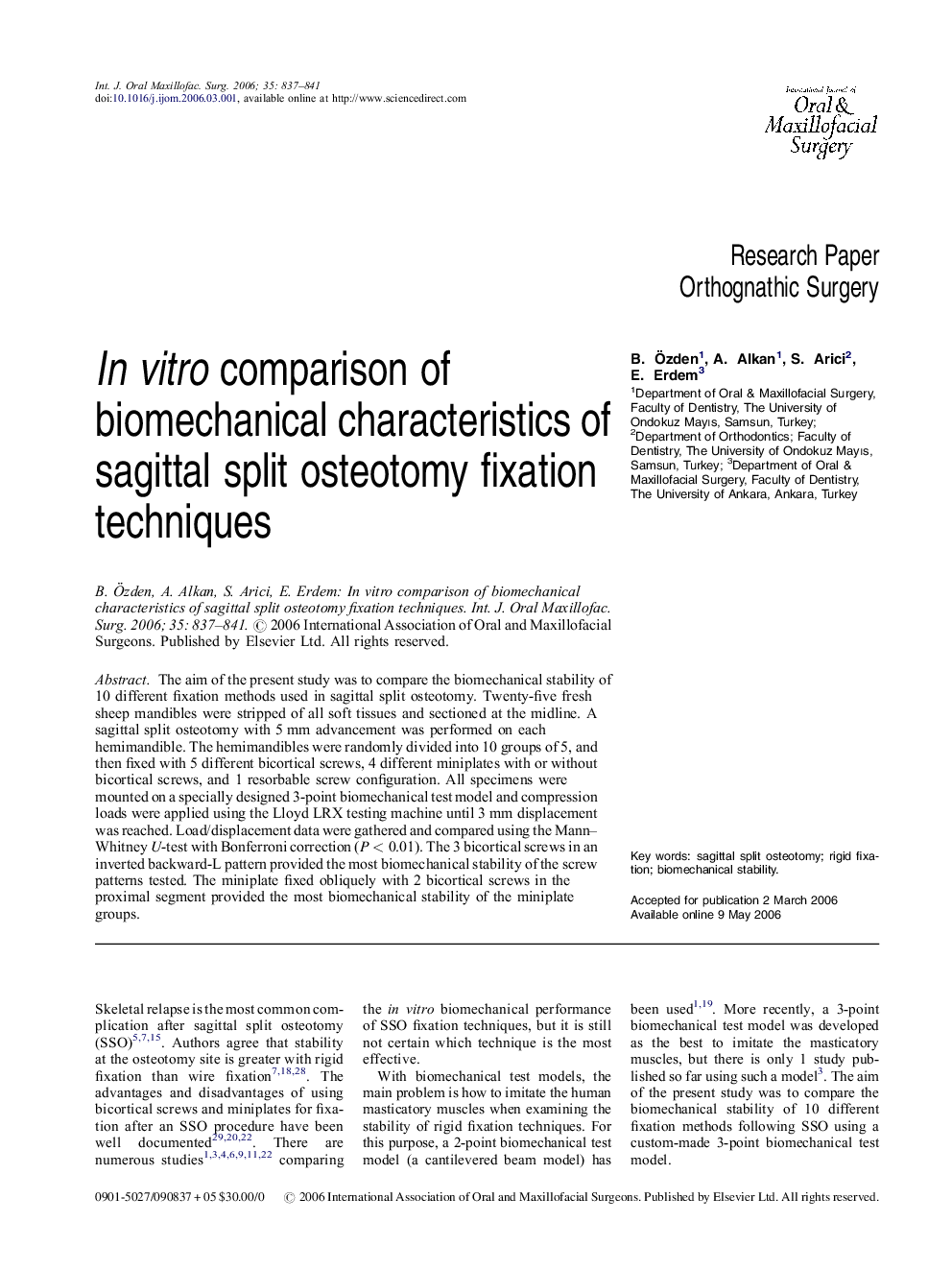| Article ID | Journal | Published Year | Pages | File Type |
|---|---|---|---|---|
| 3134306 | International Journal of Oral and Maxillofacial Surgery | 2006 | 5 Pages |
The aim of the present study was to compare the biomechanical stability of 10 different fixation methods used in sagittal split osteotomy. Twenty-five fresh sheep mandibles were stripped of all soft tissues and sectioned at the midline. A sagittal split osteotomy with 5 mm advancement was performed on each hemimandible. The hemimandibles were randomly divided into 10 groups of 5, and then fixed with 5 different bicortical screws, 4 different miniplates with or without bicortical screws, and 1 resorbable screw configuration. All specimens were mounted on a specially designed 3-point biomechanical test model and compression loads were applied using the Lloyd LRX testing machine until 3 mm displacement was reached. Load/displacement data were gathered and compared using the Mann–Whitney U-test with Bonferroni correction (P < 0.01). The 3 bicortical screws in an inverted backward-L pattern provided the most biomechanical stability of the screw patterns tested. The miniplate fixed obliquely with 2 bicortical screws in the proximal segment provided the most biomechanical stability of the miniplate groups.
